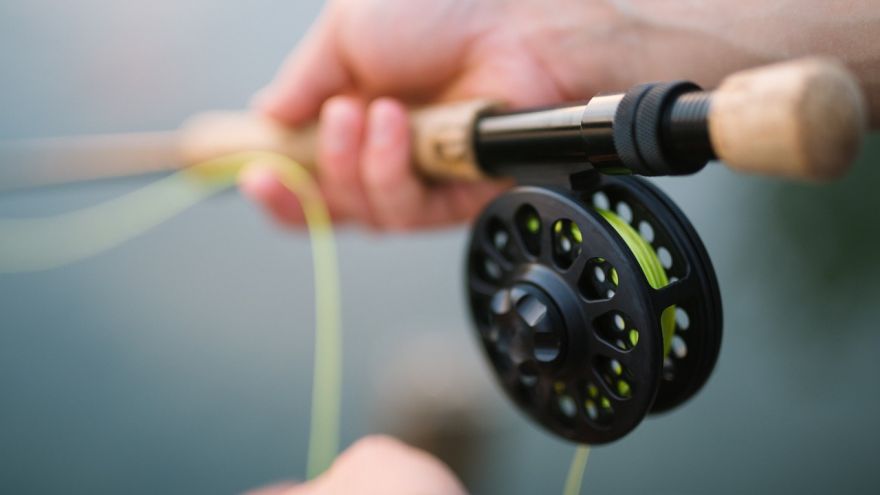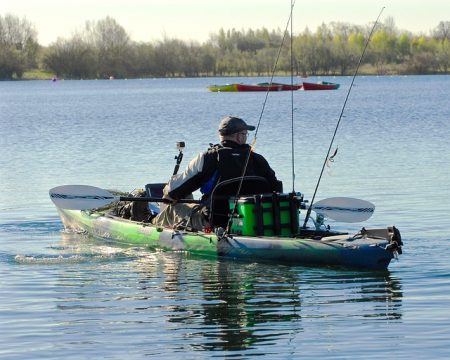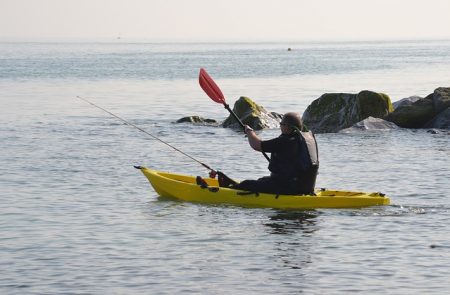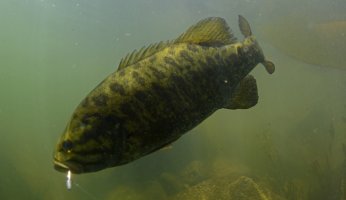Necessity, the Mother of Fish?
 Necessity, the Mother of Fish?
gearweare.net
Necessity, the Mother of Fish?
gearweare.net
When most of us were children and just learning to fish, our parents were probably not quite as enthusiastic about the sport as we were. We can’t really blame them since, if you were like me, it would not be the first afterschool activity that you started and then gave up on. This reluctance, in my own parents, was very evident when it came to buying fishing tackle and gear. I had it doubly difficult, since neither one of them fished. This meant that they not only didn’t understand the desire for more tackle, but they also had a healthy dose of skepticism as to what was necessary and what wasn’t.

Ultimately, what all of this meant was that I carried around a tackle box that had more rusty hooks and free-rolling sinkers in it than fishing lures. There may have been one or two rusty, rooster tails in there, if I was lucky. Perhaps one of those black plastic frogs that, while it floated and was indestructible, it barely moved and got no bites from fish. At least fish with any self-respect.
However, looking back, I think of all the fish that I managed to catch when I did have a rusty spinner laying around or possibly something that would suffice for swim bait. I have to wonder how I ever did it. Today, I can go to a lake and spend half of the day just digging through my tackle bags, trying to find something that might trigger a bite. I seem to have more tackle than I know what to do with! The younger me would have been overwhelmed with the choices in tackle that I drag around with me from day to day.
Recently, kayak fishing has become very popular. Most of the knowledgeable anglers who have tried it will make the comment, somewhere along the line, that fishing from a kayak will make you a better angler. The reason, they correctly acknowledge, is because you are limited in the amount of tackle that you can keep on hand. Kayaks simply do not have the storage space that a bass boat or even a canoe has. The angler has to pare down on gear, and plan the trip carefully. This means that, by necessity, you begin to re-examine the fundamentals of fishing. You re-learn to select baits that will work in more than one set of conditions, much like you did when you were younger and you were spending your birthday money.

Fortunately, you do not have to purchase a kayak to relearn these lessons. While a kayak will certainly “force” you to scale back and examine your selection of fishing lures, so will making the conscious decision to take less. If you really want a challenge, take only one type of lure with you, when you go on your next outing. The goal here is not to make it impossible for you to catch fish. The purpose of such a ploy is to learn different ways of fishing the same lure.
I think that most anglers will agree, that one of the most flexible baits available to them is the plastic worm. It can swim, it can jig, or it can be jerked. With the presence or absence of a weight, it can be used in all depths. However, many anglers would be surprised to learn that they can slip a small finishing nail into a worm, in different locations, and this will give it different actions. It will also give the worm different drop rates, as it falls through the water columns. You can even play with a floating worm and a nail (make sure you have snips to change the nail size), until you have a perfectly suspended worm at a given depth!
Speaking for myself, I don’t experiment with a bait, to this degree, every time that I go out. It is much easier to dig through my bag and change the type of bait, to get my lure where I want it to be. However, the truth is that most of our baits can do dual or even triple duty, if we simply learn how to fish them. We do not need four different sized lips on our crank baits if we experiment with adding and removing weights. How many times have you run out of a specific lure, just when you thought that you needed it the most?
Spinners can be fished with a steady ‘cast and retrieve’, ‘slow-rolled’ on the bottom, and even jigged straight up and down. Lifting a rod tip and allowing the blade to flutter to the bottom can frequently entice reluctant fish to bite a spinner when nothing else will. Jerking a spinner during the retrieve imitates a wounded baitfish that is struggling to get away, allowing it to flutter deep before taking off again. Like crank baits, spinners with added weight will get to depths that only larger and heavier ones can reach.
One of my personal favorites is the Mister Twister grub bait. The small, curly tail makes them great for swimming with a slow, steady retrieve. A slip sinker allows you to fish it Texas-style, as if it were any other plastic worm. Your friend the nail works quite well with it also, in lieu of a sinker, allowing you to control its depth and drop rate. By foregoing a sinker and slipping a nail into it, you do not have to worry about snagging the heavy grass and moss, which sinkers seem to attract.
I suspect that as we’ve gotten older, many of us have forgotten how to experiment with the three or four lures that used to live in our one tray tackle box. It’s no wonder, given the unlimited choices that are available to us. Have you ever looked at the year’s “must have bait”, and realized that it looks suspiciously like the “must have bait” from three years ago?

Will you catch fish by fishing your favorite hole, with a bag of plastic worms and a few nails? Maybe or maybe not, but you will certainly find yourself trying tactics that you’ve never thought of before. Necessity truly is the mother of invention, and by intentionally placing yourself in situations that force you to rely more on your imagination than your tackle bags, you will become a better angler.
The next time you find yourself spending the day, digging through hundreds of dollars of tackle in order to catch a fish, ask yourself if it is really necessary. Maybe it’s time to think outside the box and set yourself up for a visit to Fishing Boot Camp. Not only will you surprise yourself with your problem solving skills, as you re-learn the different uses of lures, but for at least one day, you get to be the kid with the one-tray tackle box again.













